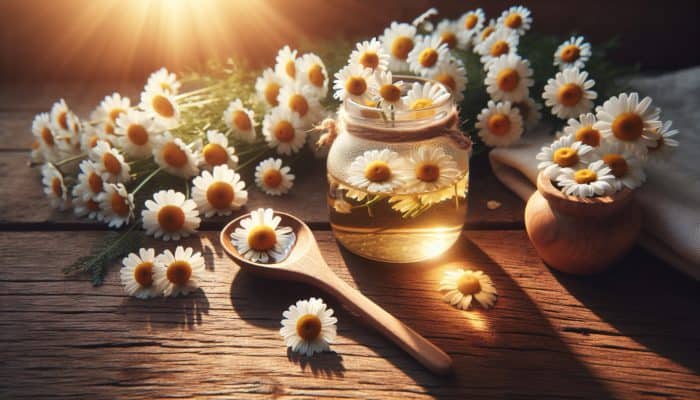Unleash the Incredible Advantages of Creating Your Own Herbal Hair Rinses
Engaging in DIY herbal hair rinses is far more than just a fleeting trend; it is a transformative practice that can profoundly elevate your hair care regimen. These natural mixtures harness the potent benefits found in a variety of plants, delivering a plethora of advantages that culminate in hair that looks rejuvenated and full of life. By incorporating DIY herbal hair rinses into your everyday beauty routine, you can achieve enhanced hair vitality, increased shine, and a conditioning effect that nourishes your hair without exposing it to the harsh chemicals commonly found in commercial hair care products. This approach empowers you to take control of your hair’s health and appearance while embracing a natural, holistic method of beauty care.
Enhance Your Hair’s Natural Health Using Herbal Remedies

The journey to achieving stunning hair starts at the scalp, and incorporating DIY herbal hair rinses can dramatically improve this critical area. Ingredients such as Nettle, which is rich in essential vitamins and minerals, nourishes the scalp and effectively reduces dandruff while fostering healthy hair growth. Regular use of these herbal rinses cultivates a balanced scalp environment, which is essential for promoting the growth of beautiful, healthy hair. This natural method not only addresses current hair concerns but also sets the foundation for long-term hair health.
Furthermore, incorporating herbs like rosemary can amplify these health benefits significantly. Studies have revealed that rosemary oil boosts blood circulation to the scalp, potentially aiding in the prevention of hair loss. Its inherent antimicrobial properties also combat dandruff, ensuring that your scalp remains clean and free from irritants. By pampering your scalp with these powerful plant extracts, you are establishing a robust base for vibrant, resilient hair that exudes health and vitality.
Additionally, herbal rinses provide soothing and moisturizing properties for the scalp, which is especially beneficial for individuals prone to dryness or irritation. For example, chamomile not only calms sensitive skin but also delivers a natural lightening effect on hair, imparting a healthy, radiant shine without the need for chemical treatments. This comprehensive approach to hair care guarantees that your hair stays strong, healthy, and less vulnerable to issues like breakage and frizz, making it an essential part of your beauty regimen.
Achieve Dazzling Shine and Luxurious Volume with Herbal Solutions
If your goal is to have hair that is not only vibrant but also voluminous, DIY herbal hair rinses are your ultimate solution. The consistent application of these natural rinses can bestow a stunning sheen, reflecting light beautifully. Herbs such as lavender and <a href=”https://mcrtherapies.co.uk/how-to-adjust-herbal-dosages-safely-a-uk-guide/”>sage</a> not only enrich your hair with essential nutrients but also contribute to that much-desired shine. These natural ingredients enhance the inherent brilliance of your hair without relying on synthetic shine-enhancers, ensuring that your locks look naturally beautiful.
The volumizing benefits of herbal rinses are equally remarkable. By stimulating hair follicles and fortifying hair strands, these rinses create the illusion of fuller, thicker hair. For instance, nettle is celebrated for its capacity to add body and thickness, making it a popular choice for individuals with fine hair textures. By selecting a rinse that promotes volume, you can effortlessly elevate your hairstyle, adding a touch of luxury and sophistication that turns heads and boosts confidence.
In the UK, where environmental factors such as climate and pollution can adversely affect hair vitality, integrating DIY herbal hair rinses becomes increasingly vital. The natural oils and compounds inherent in these herbs work to counteract the effects of environmental aggressors, allowing you to preserve that radiant shine and volume regardless of external conditions. The self-assurance derived from having healthy, voluminous hair is undeniable, making herbal rinses an invaluable addition to your hair care strategy.
Experience the Nourishing Advantages of Natural Hair Conditioning
For individuals who prefer to condition their hair without relying on chemical-laden products, DIY herbal hair rinses offer an excellent natural alternative. These rinses can effectively soften your hair, making it more manageable and easier to style. Ingredients such as marshmallow root and calendula are particularly advantageous due to their hydrating properties, leaving your hair feeling luxuriously smooth and easy to manage. This natural conditioning approach also aligns with a holistic philosophy that respects the integrity of your hair.
Utilizing herbal rinses as a natural conditioning solution allows you to bypass the heavy buildup often associated with conventional hair care products. Many mainstream conditioners are laden with silicones and other synthetic ingredients that can weigh hair down or strip it of its natural texture. By choosing herbal options, you embrace a gentler, more respectful approach that honors your hair’s natural characteristics, allowing it to shine in its full glory.
Moreover, not only do herbal rinses serve the purpose of conditioning, but they also contribute significantly to overall hair health. The nourishing properties of these botanicals aid in repairing damage, reducing split ends, and restoring shine—all without the need for harsh chemicals. As you weave DIY herbal hair rinses into your hair care routine, you will likely observe ongoing improvements in the health, manageability, and vibrancy of your hair, standing as a testament to the remarkable power of nature.
Discover the Most Beneficial Herbs for Your Herbal Hair Rinses

Selecting the appropriate herbs for your DIY herbal hair rinses can greatly influence the outcomes you achieve. Each herb comes with unique properties capable of addressing specific hair concerns. By understanding these herbs and their benefits, you can customize your rinses to promote optimal hair health and vitality, ultimately leading to beautiful locks that you can be proud of.
Unlock the Growth Potential of Nettle in Your Hair Care Routine
Nettle is often celebrated as a powerhouse in the realm of herbal hair care, and for good reason. This extraordinary plant is rich in vitamins A, C, K, and various B vitamins, along with essential minerals such as iron, calcium, and magnesium. These nutrients work in harmony to fortify the hair shaft and improve overall hair health. When included in DIY herbal hair rinses, nettle can effectively stimulate hair growth, making it an excellent choice for those facing thinning hair or hair loss.
In addition to promoting growth, nettle plays a crucial role in reducing dandruff and ensuring a healthy scalp. Its anti-inflammatory properties can soothe irritation and address conditions such as eczema or psoriasis. For individuals in the UK grappling with seasonal scalp issues, incorporating nettle into your hair care regimen could provide the relief you’ve been seeking.
To create a nettle rinse, simply steep fresh or dried nettle leaves in boiling water for about 30 to 60 minutes. Strain the mixture and allow it to cool before applying. The resulting infusion can be used as a post-shampoo treatment, working wonders to strengthen both your hair and scalp while promoting an environment conducive to healthy hair growth.
Enhance Your Hair’s Health with Rosemary Infusions
The aromatic herb rosemary is not just a culinary delight; it also offers exceptional benefits for hair care. Renowned for its ability to boost circulation to the scalp, rosemary encourages healthy hair growth and can even help delay premature greying. Its natural antimicrobial properties effectively combat dandruff, ensuring a clean and healthy scalp, making it a versatile addition to any hair care routine.
Incorporating rosemary into your DIY herbal hair rinses can also significantly enhance the texture of your hair. It adds shine and softness while helping to regulate oil production, making it suitable for various hair types. Those with oily hair will find that a rosemary rinse helps balance oil levels, leaving the hair feeling refreshed and invigorated.
To prepare a rosemary rinse, steep fresh or dried rosemary leaves in hot water for about 30 to 60 minutes. After cooling, strain the infusion and apply it to your hair. Your scalp will benefit from this revitalizing rinse, and your hair will emerge looking healthier and more vibrant than ever before.
Chamomile: The Gentle Solution for Luxurious Hair Care

Chamomile is often recognized as a gentle herb with soothing properties, making it an excellent choice for those with sensitive scalps. Its anti-inflammatory qualities can help alleviate irritation and foster a healthy scalp environment. Additionally, chamomile is well-regarded for its natural lightening effect on hair, making it a favored selection for individuals looking to enhance their blonde or light brown tones.
When utilized in a DIY herbal hair rinse, chamomile can also impart a lovely shine to your hair. The infusion leaves hair looking soft and radiant, while its calming aroma creates a soothing experience during your hair care ritual. For anyone in the UK seeking a natural approach to hair lightening and shine enhancement, chamomile is an outstanding option.
To create a chamomile rinse, steep dried chamomile flowers in boiling water for about one hour. Once the infusion has cooled, strain it and use it as a rinse following shampooing. This delightful herbal rinse not only enhances your hair’s color but also offers essential nourishment for your scalp, making it a holistic solution for beautiful hair.
Lavender: The Aromatic Herb for Relaxation and Enhanced Hair Growth
Lavender, with its enchanting fragrance and calming properties, is a wonderful addition to your DIY herbal hair rinses. It is widely recognized for promoting relaxation and alleviating stress, which can be particularly beneficial for individuals experiencing stress-related hair loss. Lavender oil has been shown to stimulate hair growth when applied to the scalp, making it a popular choice for those looking to enhance hair density.
Beyond its growth-promoting attributes, lavender also assists in regulating oil production on the scalp. This characteristic makes it suitable for both dry and oily hair types, providing hydration without overwhelming the scalp. The anti-inflammatory properties of lavender can soothe irritation and diminish itchiness, creating an optimal environment for healthy hair growth.
To harness the benefits of lavender, steep dried lavender flowers in hot water for about 30 minutes. Strain the mixture and use it as a hair rinse after shampooing. The aromatic experience of incorporating lavender into your hair care regimen can create a delightful and calming atmosphere while delivering numerous advantages for your hair.
Sage: The Versatile Herb for Comprehensive Hair Care Solutions
Sage is not only a culinary herb; it also offers remarkable benefits for hair care. One of its standout features is its ability to naturally darken grey hair, making it an excellent option for those wishing to embrace their natural color. The antiseptic properties of sage can also enhance scalp health, helping to reduce oiliness and prevent dandruff, making it a multifunctional ingredient in any hair care routine.
When added to DIY herbal hair rinses, sage can significantly improve the overall health and appearance of your hair. It nourishes the scalp and provides essential nutrients that support hair growth. Additionally, sage can help prevent excessive oil production, making it an ideal choice for individuals with oily or combination hair types.
To prepare a sage rinse, steep fresh or dried sage leaves in hot water for about 30 to 45 minutes. Strain the infusion and allow it to cool before use. The resulting rinse not only deepens grey hair but also leaves your hair feeling clean, fresh, and revitalized, showcasing the remarkable versatility of this extraordinary herb.
Master the Art of Creating Herbal Hair Rinses
Creating your own DIY herbal hair rinses is a straightforward yet enriching process that allows you to tailor your hair care routine to meet your individual needs. By gathering the right ingredients and following appropriate preparation techniques, you can effortlessly enjoy the myriad benefits of these natural elixirs.
Gathering Essential Ingredients for Your Herbal Rinses
The initial step in crafting your herbal rinse is to assemble the key ingredients. Begin by selecting fresh or dried herbs that cater to your specific hair type and concerns. Depending on your needs, you might choose nettle for strength, chamomile for lightening, or rosemary for maintaining scalp health. Additionally, be sure to have clean, filtered water on hand, as well as optional ingredients such as apple cider vinegar or essential oils to enhance the rinse’s benefits.
When sourcing your herbs, consider visiting local farmers’ markets or health food stores to find high-quality, organic options. Alternatively, growing your herbs at home guarantees that they are free from pesticides and chemicals, ensuring the purity of your ingredients. This not only fosters a deeper connection with the plants you will be using in your hair care routine but also empowers you to create truly natural products.
Once you have gathered your ingredients, prepare your workspace by ensuring that all tools and containers are clean to avoid contamination. This attention to detail will help ensure that your DIY herbal hair rinses are both effective and safe for your hair, providing you with the best possible results.
Mastering the Infusion Technique for Maximum Potency
The infusion method is crucial for extracting the beneficial properties of the herbs into your rinse. Start by boiling water and measuring out the appropriate quantity of fresh or dried herbs. A common ratio is approximately 1 cup of herbs to 4 cups of water, although this can be adjusted based on your preferences and specific hair needs.
Once the water reaches a rolling boil, remove it from heat and add the herbs. Cover the container with a lid or cloth to maintain heat and prevent evaporation. Allow the mixture to steep for 30 to 60 minutes, depending on how strong you want the infusion to be. The longer the herbs infuse, the more potent your rinse will become, maximizing its beneficial effects.
After steeping, strain the liquid using a fine mesh sieve or cheesecloth to eliminate the plant material. Allow the infusion to cool to room temperature before incorporating it into your hair care routine. This straightforward yet powerful method ensures that you extract the maximum benefits from your chosen herbs, resulting in a potent rinse that promotes healthy hair.
Enhancing Your Herbal Rinse with an Apple Cider Vinegar Addition
Incorporating apple cider vinegar into your herbal infusion can significantly boost the overall benefits of your DIY herbal hair rinses. Vinegar aids in balancing the pH levels of your scalp, which is essential for creating a healthy environment for hair growth. Moreover, it effectively removes product buildup, leaving your hair feeling refreshingly clean and revitalized.
To include vinegar in your rinse, mix 1 to 2 tablespoons of apple cider vinegar into your cooled herbal infusion. This addition not only enhances the rinse’s effectiveness but also imparts a subtle shine to your hair; the acidic properties of vinegar help close the hair cuticles, resulting in smoother and shinier locks.
When utilizing a vinegar rinse, it’s crucial to maintain balanced ratios. Excessive vinegar can lead to dryness, so be sure to adhere to the recommended amounts. If you’re concerned about the scent, rest assured that the vinegar aroma will dissipate as your hair dries, leaving you with beautifully conditioned tresses.
Effective Application Techniques for Optimal Results
The method of applying your DIY herbal hair rinses can significantly influence their effectiveness. Proper application ensures that the beneficial properties of the herbs penetrate both the hair and scalp, maximizing results. Here are some techniques to consider for optimal usage.
After shampooing, gently squeeze out excess water from your hair and pour the herbal rinse over your locks. Be sure to massage it into your scalp during application, allowing the herbs to work their magic. This massaging action stimulates circulation and enhances nutrient absorption, ensuring that your hair receives the full benefits of the rinse.
For a more intensive treatment, consider allowing the rinse to remain in your hair for a few minutes before rinsing it out with cool water. This added time enables the herbs to penetrate the hair shaft more deeply, enhancing their effects. If you prefer a leave-in option, you can apply the rinse and let it stay in place, allowing the benefits to continue working throughout the day and night.
Experiment with various application techniques to discover what works best for your hair type and desired outcomes. Whether you opt for a quick rinse or a more prolonged treatment, consistency is key. Regular use of DIY herbal hair rinses will yield impressive results over time, enhancing your hair’s health and vitality.
Personalizing Your Application Techniques for Maximum Effectiveness
The method you employ to apply your DIY herbal hair rinses can greatly influence their effectiveness. Familiarizing yourself with the various application techniques available will empower you to customize your hair care routine for optimal results, ultimately achieving healthier and more beautiful hair.
Post-Shampoo Herbal Rinse Method for Enhanced Results
One of the simplest and most effective ways to utilize your DIY herbal hair rinse is as a post-shampoo treatment. Once you have thoroughly cleansed your hair with shampoo, it’s time to apply your herbal infusion. Begin by gently squeezing out excess water from your hair, ensuring it is damp but not dripping.
Carefully pour the herbal rinse over your hair, ensuring all strands are coated while massaging it into your scalp. This massaging action not only facilitates the absorption of beneficial properties but also stimulates blood circulation, promoting a healthy scalp and hair growth. Allow the rinse to sit for several minutes to penetrate the hair shaft and nourish your hair effectively.
After a few minutes, rinse your hair with cool water to seal the hair cuticles, further enhancing shine and smoothness. This method is straightforward yet incredibly effective, yielding immediate results in terms of softness, shine, and manageability.
Utilizing a Leave-In Herbal Treatment for Continuous Nourishment
For those seeking deeper conditioning effects, consider using your DIY herbal hair rinse as a leave-in treatment. After shampooing and rinsing, apply the herbal infusion to damp hair, leaving it in without rinsing it out. This approach allows the nutrients from the herbs to remain effective throughout the day, providing ongoing nourishment and protection.
To apply, pour the herbal rinse over your hair and work it through using your fingers or a wide-tooth comb, concentrating on the ends, which often require the most care. This technique is particularly beneficial for dry or damaged hair, as it locks in moisture and helps reduce frizz, resulting in a smooth, polished look.
As the rinse dries, your hair will absorb the nourishing properties, leading to soft, shiny, and revitalized locks. This method is especially suitable for individuals with busy lifestyles, as it offers low-maintenance hair care without compromising on results.
Incorporating Scalp Massage for Enhanced Benefits
Integrating a scalp massage into your DIY herbal hair rinse routine can substantially boost its effectiveness. By massaging the rinse into your scalp, you ensure that the beneficial properties of the herbs penetrate deeply while stimulating blood flow to the hair follicles, promoting overall hair health.
Begin by applying the herbal rinse to your scalp, sectioning your hair for better access. Use your fingertips to gently massage the rinse into your scalp in circular motions. This technique not only helps to dislodge any buildup but also encourages relaxation, making it a delightful addition to your hair care ritual.
Spend several minutes massaging your scalp, enjoying the soothing sensations. This practice can be particularly beneficial if you’re experiencing stress-related hair loss or scalp irritation, as it promotes a sense of well-being. After massaging, allow the rinse to sit for a few minutes before rinsing it out to fully enjoy the benefits of the herbs.
Indulge in an Herbal Steam Treatment for Deep Nourishment
For a luxurious and deeply nourishing experience, consider an herbal steam treatment using your DIY herbal hair rinse. This method opens the hair cuticles, allowing the beneficial properties of the herbs to penetrate more effectively. It’s an excellent option for those looking to maximize the results of their herbal rinses and indulge in a spa-like experience at home.
To create a steam treatment, prepare your herbal rinse as usual, then gently warm it without boiling. Transfer the rinse to a heatproof bowl and place it on a stable surface. Drape a towel over your head to create a tent over the bowl, trapping the steam and enhancing the infusion’s effects.
Lean over the bowl, allowing the steam to envelop your hair and scalp. This process typically lasts around 10 to 15 minutes and can be a remarkably relaxing experience. The heat helps to open the hair cuticles, enhancing absorption and allowing your hair to soak in all the nutrients from the herbs. Once finished, rinse your hair with cool water to seal the cuticles and lock in moisture, ensuring that your hair feels revitalized and nourished.
Overnight Soak for Intensive Nutritional Benefits
For those seeking deep nourishment, an overnight soak with your DIY herbal hair rinse is an excellent choice. This method allows the herbs to work their magic while you sleep, providing maximum hydration and care for your hair.
To implement this, generously apply the herbal rinse to your hair, ensuring that all strands are thoroughly coated. Use a wide-tooth comb to distribute it evenly, paying special attention to the ends, which often require the most moisture. Once applied, cover your hair with a shower cap or a soft towel to protect your bedding and keep the rinse in place.
As you sleep, your hair will absorb the nutrients from the herbs, allowing for deeper conditioning than a standard rinse can provide. In the morning, wash your hair as usual, and you will notice a remarkable difference in softness, shine, and overall health. This approach is particularly beneficial for dry or damaged hair, offering an intensive treatment without the need for additional products.
Customizing Rinses to Address Your Unique Hair Types
One of the most appealing aspects of DIY herbal hair rinses is the ability to tailor them to meet your specific hair type and concerns. Different herbs cater to various needs, allowing you to create blends uniquely suited to your hair profile. This customization ensures that you get the best results possible for your individual hair health journey.
Moisturizing Rinses for Hydration in Dry Hair
For individuals with dry hair, hydration is crucial in achieving healthy locks. Incorporating moisture-rich herbs such as marshmallow root and calendula into your DIY herbal hair rinses can dramatically boost moisture levels in your hair. Marshmallow root is particularly noteworthy for its high mucilage content, which provides slip and hydration, making it an excellent choice for detangling and nourishing dry strands.
Calendula, known for its anti-inflammatory properties, can soothe and heal the scalp, creating a healthy environment for hair growth. When combined in a rinse, these herbs work synergistically to deliver intense hydration that helps minimize breakage and frizz, ensuring that your hair remains healthy and vibrant.
To create a rinse for dry hair, steep equal parts of marshmallow root and calendula flowers in boiling water for 30 to 60 minutes. Strain and cool the infusion before use. By consistently applying this nourishing rinse, you’ll find that your dry hair transforms into manageable, hydrated locks that are full of life.
Clarifying Rinses to Control Oiliness in Oily Hair
If you struggle with oily hair, incorporating astringent herbs like witch hazel and lemon balm into your DIY herbal hair rinses can help regulate oil production and maintain freshness for longer periods. Witch hazel is renowned for its ability to tighten pores and reduce excess oil, making it a valuable addition for those with greasy scalps.
Lemon balm also provides a refreshing, astringent quality, helping to clarify the scalp and eliminate product buildup. This combination not only balances oil levels but also leaves your hair feeling light and clean, enhancing your overall hair health.
To prepare a rinse for oily hair, create an infusion using equal parts of witch hazel and lemon balm steeped in hot water for about 30 minutes. Strain the mixture and let it cool before use. Regular application will help manage oiliness, resulting in hair that feels cleaner, fresher, and more manageable.
Preserving the Vibrancy of Colored Hair with Herbal Rinses
Maintaining the vibrancy of colored hair is essential for keeping your locks looking fresh and healthy. Selecting herbs like henna and indigo for your DIY herbal hair rinses can enhance and preserve your hair color while providing necessary conditioning benefits.
Henna is a natural dye that imparts rich color and shine to hair. It enhances the vibrancy of red and brown tones and strengthens the hair shaft, reducing breakage. Conversely, indigo offers darker tones and helps maintain the richness of black and dark brown hair, ensuring your color remains vibrant and beautiful.
To create a rinse for colored hair, mix henna or indigo powder with hot water to form a paste. Allow it to cool before applying it to your hair, focusing on the ends. This treatment can help restore vibrancy while delivering essential nutrients, ensuring your colored hair remains in optimal condition.
Safety Precautions and Considerations for Herbal Hair Rinses
While DIY herbal hair rinses offer numerous benefits, it is essential to take safety precautions to ensure a positive experience. Being mindful of potential allergens, proper storage methods, and usage instructions can maximize your enjoyment and effectiveness of these herbal concoctions, ensuring a safe and beneficial experience.
Preventing Allergic Reactions to Herbs
Before diving into the world of herbal hair care, conducting a patch test with any new ingredients is crucial. Allergic reactions can occur even with natural products. To assess for sensitivity, apply a small amount of the herbal rinse to a discreet area of your skin, such as behind your ear, and wait 24 hours to see if any irritation develops. This simple step can save you from potential discomfort or adverse reactions.
If you experience any redness, itching, or swelling, discontinue use immediately. Common allergens in herbal preparations include chamomile (for individuals with ragweed allergies) and certain essential oils. By taking these precautions, you can reap the rewards of DIY herbal hair rinses without the risk of adverse effects.
Proper Storage Techniques for Preserving Herbal Rinses
Appropriate storage of your herbal rinses is vital for preserving their effectiveness. Store your prepared rinses in clean, airtight containers to prevent contamination and ensure freshness. Keep them in a cool, dark location, as exposure to sunlight can diminish the potency of the herbs over time, reducing their effectiveness.
If you create larger batches of your rinses, consider refrigerating them to extend their shelf life. Generally, it’s advisable to use homemade herbal rinses within one to two weeks. If you notice any changes in smell or appearance, discard the rinse and prepare a fresh batch to ensure you are using effective and safe products for your hair.
Guidelines for Safe Usage of Herbal Rinses
Adhering to the recommended dilution and application guidelines is crucial to avoid overuse or potential irritation from your DIY herbal hair rinses. While the herbs are natural, excessive usage can lead to unwanted effects, such as dryness or sensitivity. Being mindful of how your hair reacts to the rinses will help you achieve the best results.
As a general rule, start with a smaller quantity of herbal rinse and gradually increase as necessary. Pay close attention to how your hair responds and adjust your routine accordingly. Consistency is essential, but it’s also vital to be aware of your hair’s unique needs and avoid overexposure to treatments, ensuring that you maintain healthy and beautiful hair.
Your Questions Answered: Frequently Asked Questions about Herbal Hair Rinses
Which herbs are most effective for promoting hair growth?
Nettle, rosemary, and lavender are exceptional herbs known for their nourishing and stimulating properties that promote hair growth, making them excellent choices for any hair care regimen.
Can I safely use herbal rinses on colored hair?
Yes, herbal rinses can enhance and maintain the vibrancy of colored hair. Henna and indigo are particularly beneficial for preserving color and providing nourishment.
How often should I use herbal hair rinses for optimal results?
For the best outcomes, use herbal hair rinses 1 to 2 times a week, adjusting the frequency based on your hair type and individual needs to achieve the desired effects.
Are there any side effects associated with herbal hair rinses?
While generally safe, some individuals may experience allergic reactions. Always perform a patch test before using new herbs to avoid any unexpected issues.
Is it permissible to leave herbal rinses in my hair?
Yes, you can use herbal rinses as leave-in treatments for added nourishment, especially for dry or damaged hair that requires extra moisture and care.
How long do homemade herbal rinses remain effective?
Homemade herbal rinses are best used within a timeframe of 1 to 2 weeks. Store them in a cool, dark place or refrigerate for extended freshness and potency.
Are herbal rinses effective for treating dandruff?
Yes, herbs like rosemary and nettle can help alleviate dandruff due to their anti-inflammatory and antimicrobial properties, promoting a healthier scalp.
Can I combine different herbs in my rinse for tailored benefits?
Absolutely! Mixing herbs allows you to create a personalized rinse that addresses your specific hair concerns and needs, optimizing your hair care routine.
Is there a recommended temperature for preparing herbal rinses?
It’s best to use boiling water to steep the herbs, then allow the infusion to cool before application, ensuring the maximum extraction of beneficial properties.
Are there any herbs I should avoid in hair rinses?
Certain individuals may be sensitive to specific herbs, such as chamomile (especially if allergic to ragweed). Always check for allergies before use to ensure a safe experience.
Connect with us on Facebook!
The Article: DIY Herbal Hair Rinses: Natural Care for Your Hair appeared first on https://mcrtherapies.co.uk
The Article Herbal Hair Rinses: DIY Natural Care for Gorgeous Locks Was Found On https://limitsofstrategy.com

